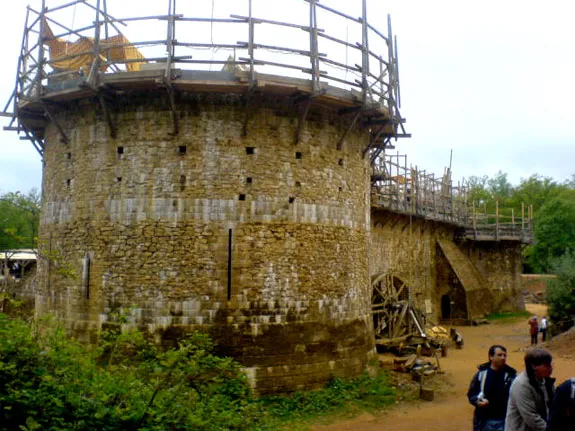A Medieval Castle in the Making
The construction of a medieval fortress in France is answering important questions about 13th-century building techniques
/https://tf-cmsv2-smithsonianmag-media.s3.amazonaws.com/filer/20120521013035Guedelon-photo.jpg)
The construction of Guédelon about 100 miles southeast of Paris has already been underway for 15 years, yet workers are proud about how long it’s taking. That’s because you don’t build a medieval castle in a day using 13th-century techniques only.
The project, begun in 1997, is the brainchild—or, as it was said at the time, the idée folle—of Michel Guyot, an architectural historian who restored the nearby Château de St.-Fargeau. In the process he discovered the remains of a castle that predated the elegant 17th manor. Fascinated by the building they suggested, he decided to recreate it in the forest a dozen miles from St.-Fargeau, enlisting experts who studied illuminated manuscripts, stained-glass windows and extant medieval structures to devise a fully authentic design.

With Guédelon now on the rise, no one’s calling Guyot crazy and the point of the exercise grows ever more apparent. Like one of those illustrated children’s books by David Macaulay—”Cathedral,” “Castle,“ “City,“ “Pyramid”—it is aimed at answering a question everyone asks when visiting remarkable edifices from the Middle Ages: How did workers do it without trucks, bulldozers and power tools?
At Guédelon a team of three dozen workers has to quarry and shape stone, build pulley and treadmill-driven cranes, make rope, tile and mortar, chop wood for beams and move them by horse cart to raise the stronghold, explaining the snail’s pace of the project. Routinely visited by experts to make sure no corners are cut, Guédelon is an open-air laboratory for architectural historians. For adult visitors the pleasure and interest are in the process, while children encounter it as a dream come true, far more real than any Magic Kingdom castle.
I found Guédelon, nestled in the old oak woods of Burgundy, by chance a few years ago, pulled into the parking lot with lots of room for school buses and signed on for the tour. First off, we stopped in a clearing where models tell the story of the evolution of castle architecture from fortified farmhouses to stone strongholds with towers, moats, internal courtyards and curtain walls that grew up in the 13th century to protect the borders of the growing French kingdom. Guédelon was conceived as the dwelling of a middle-ranking feudal lord, modest in scale and embellishment.
In the medieval village around the perimeter we saw basket, dye and tile-makers, shingle-cutters, blacksmiths and stables for work animals. Nearby the forest gives way to an on-site quarry at the threshold of a hollowed-out dish of ground where stones mined with pickaxes and chisels are taking the shape of a castle. A fixed bridge crosses the dry moat to a courtyard ringed by buildings, including a vaulted great hall, kitchen, storerooms and chapel now more than half-finished. This year work is focusing on fireplaces in the lord’s chamber and the western retaining wall, along with the north antechamber’s paving stones and murals.
We climbed narrow staircases, crossed roofless rooms and stopped to chat with workers wearing safety glasses and hard hats, a few of the concessions mandated by construction work in modern times. All the while, I wondered whether Guédelon will be half as impressive when it is finished as it is now. No worry, it won’t be ready for the lord to move in until 2023.
/https://tf-cmsv2-smithsonianmag-media.s3.amazonaws.com/accounts/headshot/Spano.jpg)
/https://tf-cmsv2-smithsonianmag-media.s3.amazonaws.com/accounts/headshot/Spano.jpg)